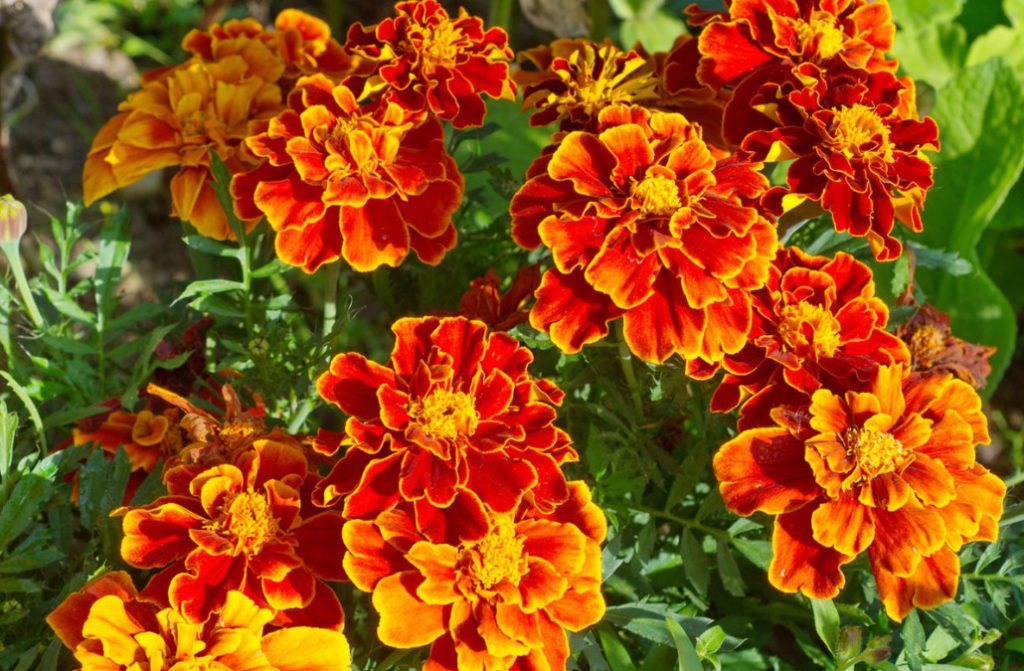Thanks to its decorative and surprising unpretentiousness, Tagetes has won an enviable popularity among gardeners. They won my heart when I was a child, and I still do not stop admiring these lovely creatures, planting them every year in the flower garden.
Experienced summer residents plant this annual not only for the sake of beauty. With its unique properties, it acts as a natural insecticide, at the same time helping to resuscitate depleted soil. Therefore, in the coming season, I decided to plant Tagetes not only in the flower garden, but also among garden crops and in garden beds. I will do this for two purposes: I will paint the country landscape with bright colors and at the same time check in practice the authenticity of rumors about their benefits for the garden. Would you like to join me?
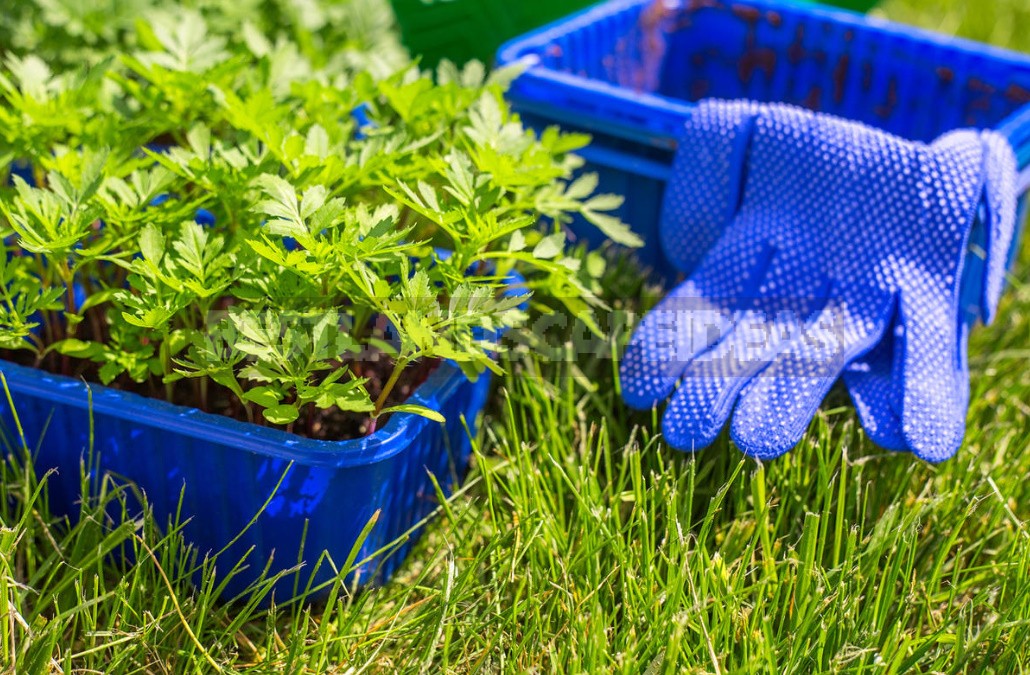
Mixed planting
Have you noticed how strong a specific flavor is inherent in Tagetes? Powerful phytoncides, which are contained in all parts of this plant, do not confuse pollinating insects, but, as it turned out, are not to the liking of various garden pests. According to experienced summer residents, it is enough to plant Tagetes next to a culture that is regularly attacked by this or that harmful bug, and the enemy will be defeated.
Onions and carrots
I was inspired by the publications that The Tagetes fragrance does not tolerate Napomyza gymnostoma and Psila rosae. Previously, to combat these pests, I tried to plant onions and carrots on the same bed: a row of onions, a row of carrots, etc. to be Honest, this experiment did not impress me. A couple of weeks before harvesting, the onion had to stop watering, and the moisture-loving carrot did not want to put up with such barbarity.
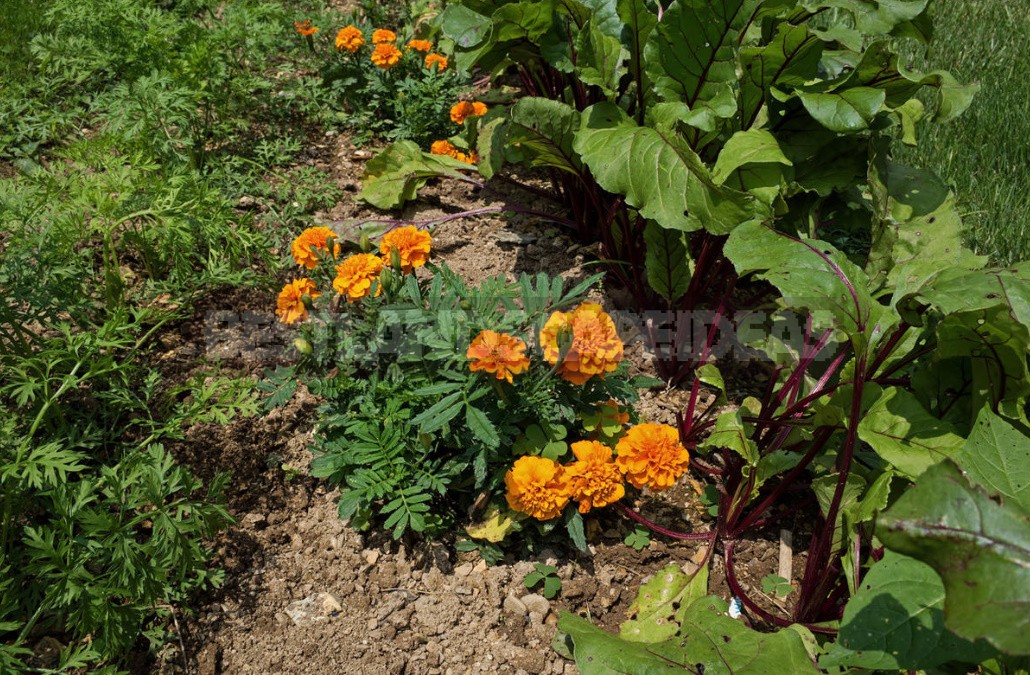
Experienced gardeners say that these vegetables do not have to be so tormented. It is enough to “layer” their separate beds with rows of Tagetes, which will not allow the flies to get close to landing on a cannon shot.
Cabbage
It turns out that this bright flower is no less effective in fighting Noctuidae and Pieridae, which already in early summer begin to curl over the cabbage bed. The butterflies themselves are not so terrible as their voracious offspring – caterpillars, in a few days turning cabbage leaves into a sieve. They say that if you plant Tagetes in the aisles of a cabbage plantation, you can make these winged villains go to other places to lay eggs.
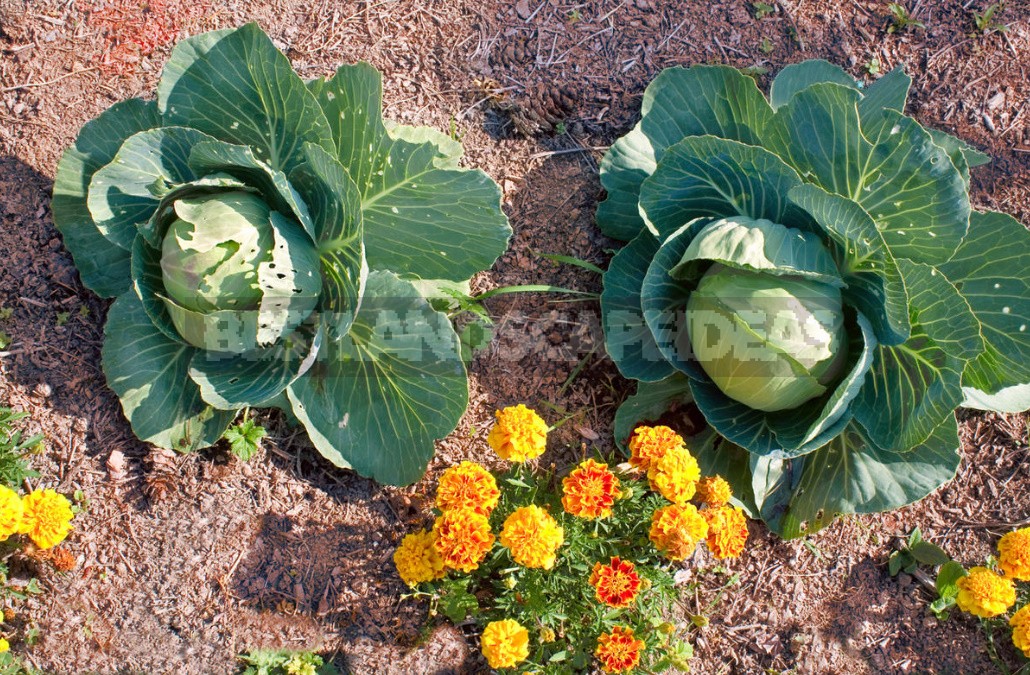
Along with Noctuidae and Pieridae, Phyllotreta cruciferae should also disappear. This hopperhead haunts me every season! Moreover, it harms not only cabbage, but also its other relatives. I will definitely surround these crops in the coming season with Sunny Tagetes!
Potato
Have you heard that mixed plantings of Tagetes and potatoes effectively repel the Colorado beetle? And I recently read about it! To be honest, I can hardly believe it. Leptinotarsa decemlineata certainly won’t give up so easily. But you still need to try out The Tagetes flavor on it. You never know!
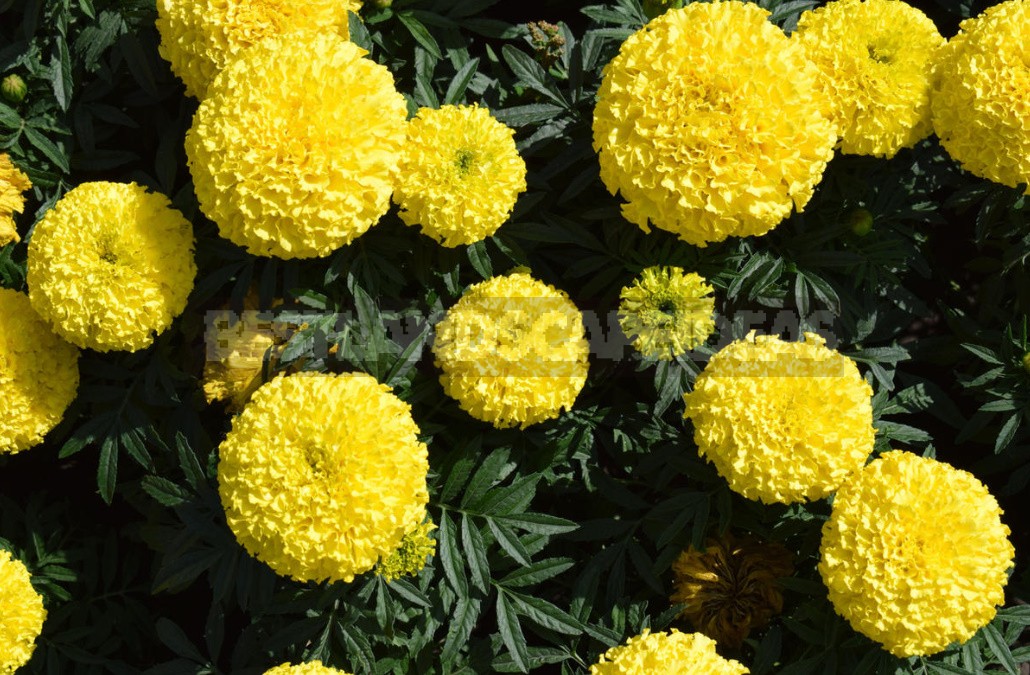
Planting Tagetes on the edges of a potato plantation is ineffective in this case. But if you plant flowers mixed with vegetables (a number of Tagetes, a number of potatoes), it will be useful. I doubt that Tagetes will scare off the pest, most likely, they will just mask potato planting — the beetle will not smell it and will not recognize it. Maybe some of you have already tried this method in practice. I really want to get real reviews.
Strawberry
It is also believed that Tagetes is a loyal assistant of strawberries in the fight against Curculionidae. To get rid of the scoundrel, you just need to sow this bright flower in the early spring or in the winter in the rows of strawberry bushes. Is it really that simple?!
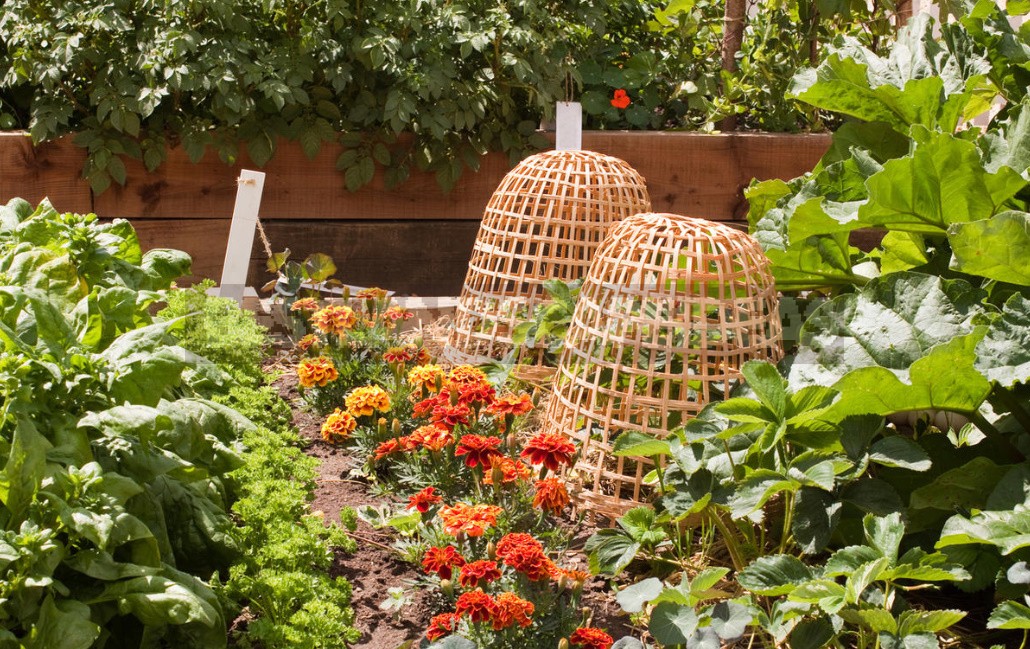
Currant and gooseberry
If you surround the bushes of currant and gooseberry Tagetes, they will no longer be suspiciously early “Mature” berries. After all, the berries that turn red before their time are nothing but the machinations of Pyralidae larvae – a secretive and very malicious pest of these crops. I think the bushes will look very nice surrounded by bright Tagetes. And if such beauty in addition will wear out Pyralidae, it will not be worth it!

Infusion for spraying
Adherents of eco-agriculture use Tagetes not only in mixed plantings, but also prepare a natural insecticidal infusion from the above-ground part of the plants, which helps to deal with aphids and leaf-eating caterpillars on trees. To do this, you need to chop 2 kg of freshly picked Tagetes shoots together with the leaves and inflorescences, pour 10 liters of water and let it stand for 2-3 days. Then you need to strain this cocktail, add a couple of spoonfuls of liquid soap to it (for sticking) and spray the damaged plants.

I once read about an interesting experience of a summer resident who uses Tagetes infusion to shed holes in the beds before planting seedlings. This method, according to her, reliably protects the root system of young plants from encroachments of Gryllotalpidae. I don’t remember the proportions, but I think the above recipe will also work.
Winter defender
Thanks to the positive experience of gardeners-enthusiasts, there is hope for the salvation of pine trees and fir trees, whose branches we break off in the fall to protect the fruit tree stems from Arvicolinae in winter. It turns out that spruce branches can be easily replaced with Tagetes shoots. To do this, they need to be tied to the base of the trunks of fruit crops in the same way – mice will not touch the bark of such odorous trees.
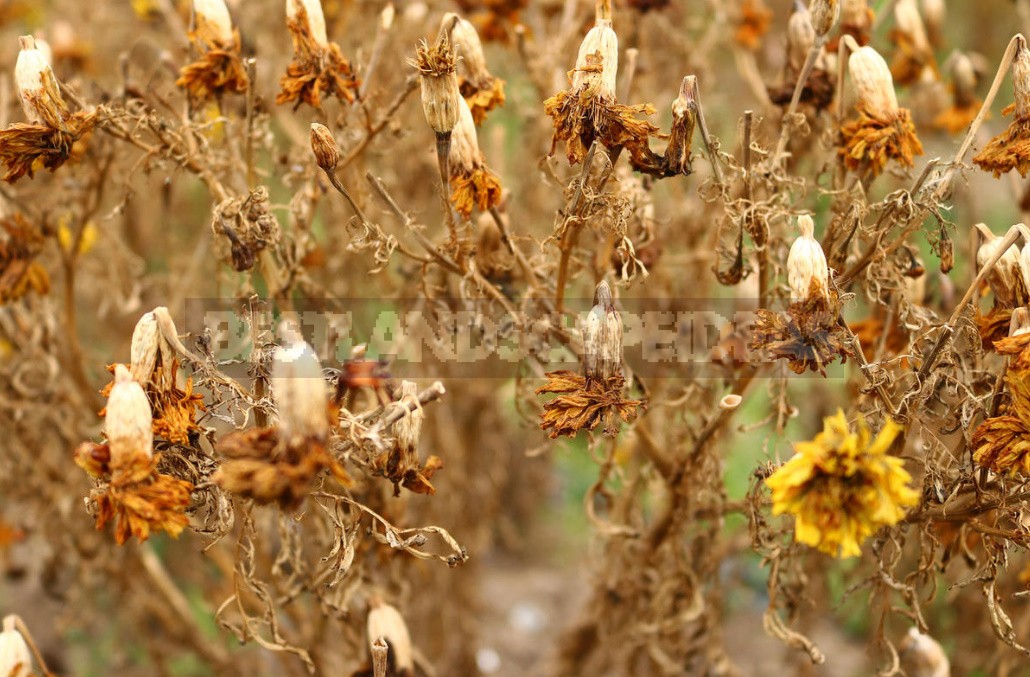
Some summer residents mulch Tagetes beds with bulbous plants for the winter, protecting the plantings from voracious rodents. Others lay out the dry tops of Tagetes on the floor of a country house, barn, cellar-mice do not risk to winter in such fragrant rooms. Worth checking out! Is it possible to reduce the endless spending on rodent poison with Tagetes?!
As a green manure
Tagetes are famous not only for their ground-based, but also underground activities. These cute flowers are sown as green manure, are actively working to improve the quality of the soil. They effectively suppress Nematoda, have a detrimental effect on fungal disease spores and perfectly improve the structure of the soil, making it more loose and breathable.

A more significant effect is achieved if you bury the tops of this annual in the soil in the fall. Annually conducting this procedure, you can get rid of Elateridae, as well as a great increase in soil fertility, because Tagetes shoots are full of valuable minerals and trace elements.
For compost
Apparently, next fall I will have a huge pile of Tagetes tops at my disposal. I have already decided what I will do with it: I will definitely put some of it in the compost bin. Useful compounds contained in the tissues of this plant promise to saturate the compost with a mass of nutrients and free it from pathogens.
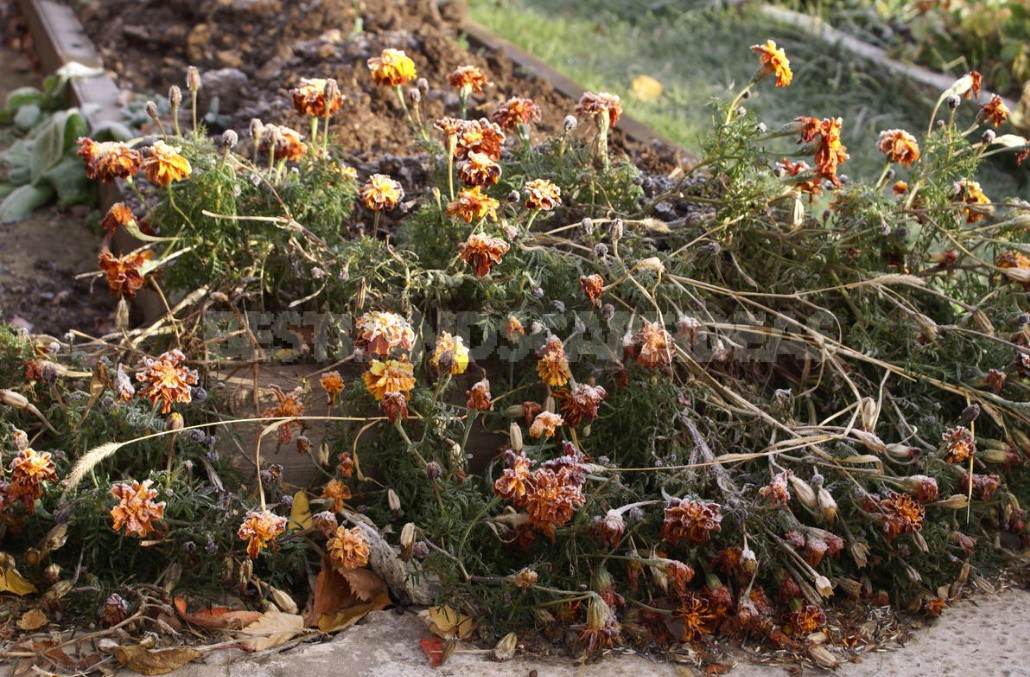
The huge variety of Tagetes varieties used to make me stand for hours at the counter with seeds, where I tried to choose the most beautiful specimens. But each of them is so good, and it was not possible to place all of them at once in the flower garden. Now my idea will come true: I will settle Tagetes in various corners of the site. And if they prove in practice their ability to heal the garden, then in the future they will become a constant favorite of my cottage.

Dear summer residents, do you use Tagetes to maintain the health of cultural plantings? Tell us about your experience in the comments.
